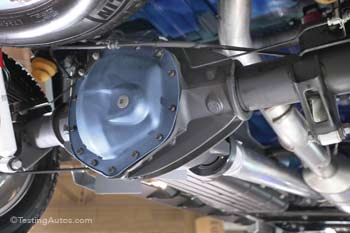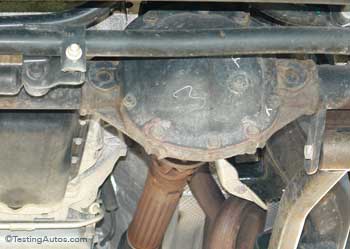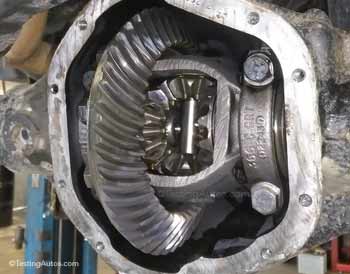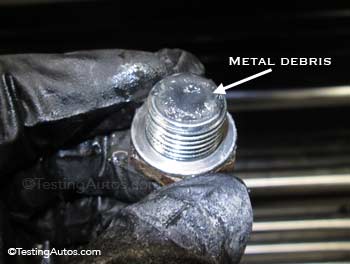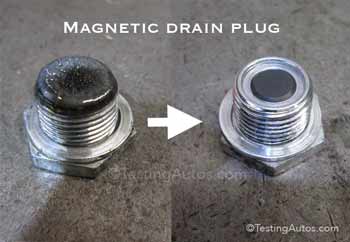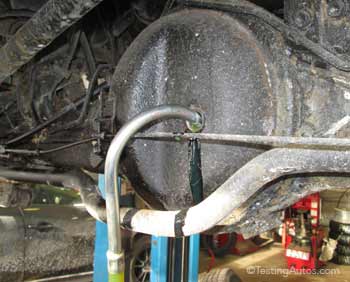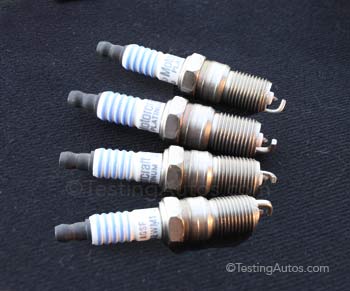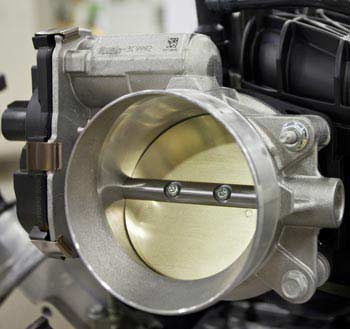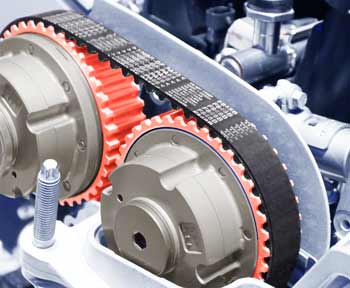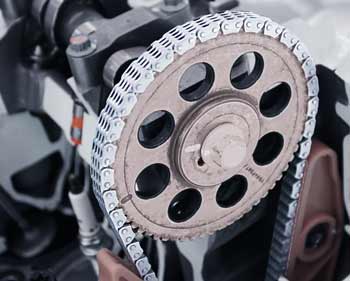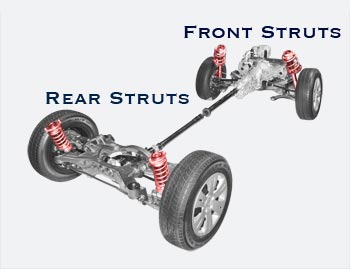How often should front or rear rear differential oil be changed?
Updated: January 23, 2023
Rear Differential:The rear differential is a key part of the rear axle in rear-wheel drive and all-wheel drive vehicles. It delivers the engine torque to the rear wheels while allowing the left and right rear wheels to rotate at different speeds when cornering. The rear differential has several gears and bearings that are lubricated by gear oil (see photo below).
These gears have to handle a lot of torque, especially in trucks and rear-wheel drive sports cars. Over time, gears and bearings gradually wear out and gear oil becomes contaminated with metal dust. Gear oil should be changed regularly to prolong the life of the differential.
Front Differential:
The front differential serves the same function as the rear one: it delivers the torque to the front wheels even when they rotate at different speeds while turning. Most modern cars and SUVs have a front differential built into the transmission (transaxle). In this case, it's lubricated by transmission fluid and doesn't need separate fluid change. However, many 4WD trucks and some Subaru vehicles have a separate front differential.
If you want to know whether your vehicle has a separate front differential, check the 'Fluids and Capacities' table in the owner's manual 'Specifications' section. If there is a separate front differential, it will be listed there.
How often should the front or rear differential oil be changed?
For normal driving conditions, differential oil should be changed every 60,000-80,000 miles or earlier if recommended by the maintenance schedule for your car.
If you like sporty driving or use your vehicle for towing, driving in muddy or otherwise severe conditions, change differential oil every 30,000-50,000 miles. In addition, differential oil always needs to be changed if the differential has been submerged in water. Check your owner's manual for details.
In some vehicles the condition of the differential oil can be checked through the fill plug. Typically the gear oil level must be close to the fill hole. If the level is lower, it will need to be topped up. If the gear oil looks dirty or has presence of metal particles or shavings, it should be changed.
However, we often see that even if the differential oil looks clean, the magnetic drain plug has quite a bit of metal shavings. The drain plug in the photo is from a small city SUV with 50K miles driven in normal conditions. As you can see it holds some amount of metal debris.
If it's a sporty rear-wheel drive car or a work truck, you will see a lot more metal debris at the same mileage. If the differential oil is contaminated with metal particles, gears and bearings wear out faster.
Whenever the gear oil is changed, the magnet must be cleaned before re-installing.
If your mechanic has found a gear oil leak from a differential or from an axle seal, it needs to be repaired as soon as possible. Read more: When does the axle seal need to be replaced in a car? After the repair is completed, it's a good idea to change differential oil.
What oil to use for the differential?
Many modern vehicles require specific differential oil or fluid. For example, vehicles with Limited Slip Differential (LSD) require specific fluid designed for this type of differential. Check your vehicle's owner's manual, look for 'Fluids and Capacities' in the Specifications section.
Advertisement
Use only the oil/fluid type recommended for your vehicle. You can always buy the correct oil/fluid from your dealer, or have it changed there. Common grades of gear oil used in rear differentials are SAE 75W-90, 80W-90, 75W-140.
How do mechanics change differential oil?
Typically, a rear differential has two plugs: the fill plug and the drain plug. The oil is drained from the drain plug. If the plug has a magnet, it must be cleaned before reinstalling.
The new fluid or oil is filled through the fill hole until it starts coming out of the fill hole as in the next photo.
In some trucks, there is no drain plug and the rear differential cover must be removed to drain the fluid and clean the debris from the bottom of the differential and the magnet. If the differential cover has a gasket, a new gasket must be used when installing the cover back. The differential is filled through the fill hole.
Changing rear differential oil in a repair shop is not very expensive: $75-$180 for an average SUV for one differential. It's important to use the proper oil (fluid) type. Many dealers and repair shops offer the AWD service that also includes changing fluid in the transfer case.
